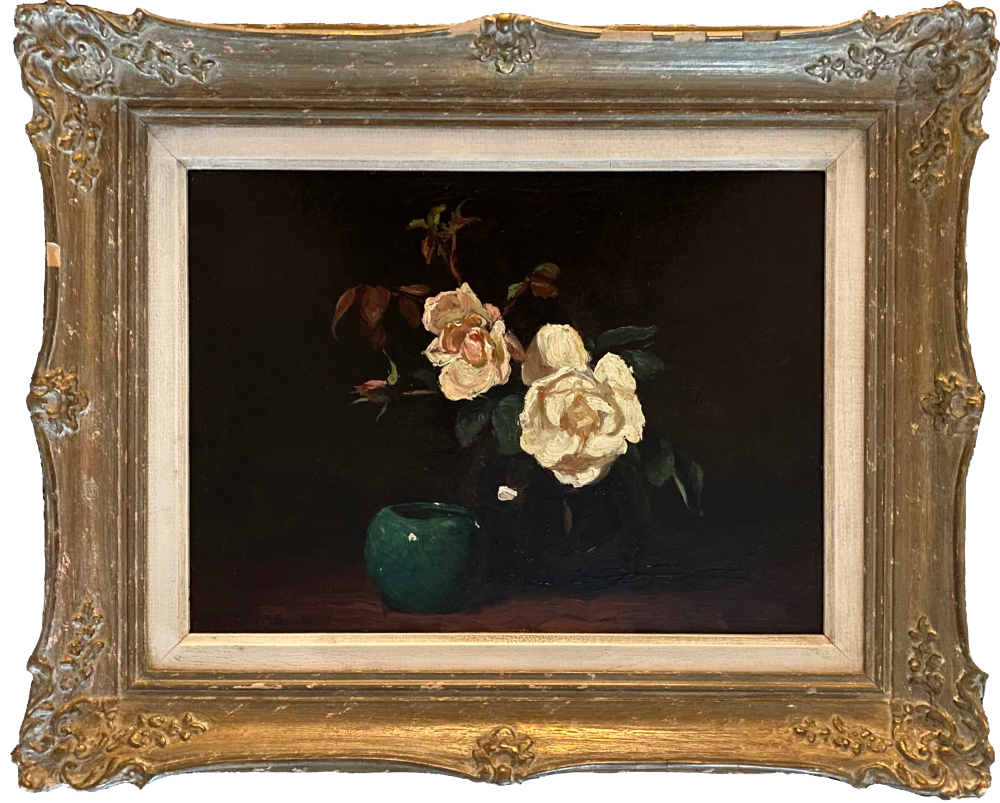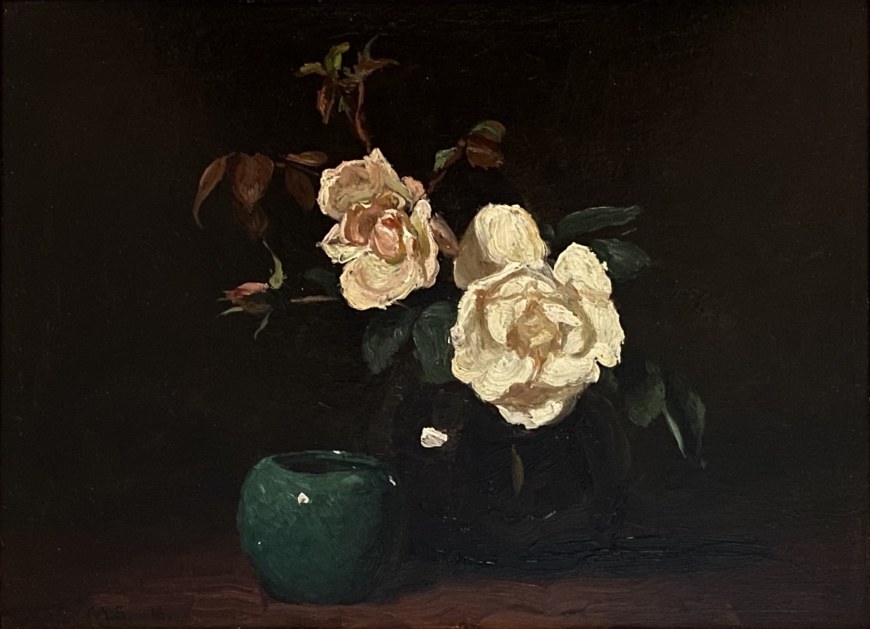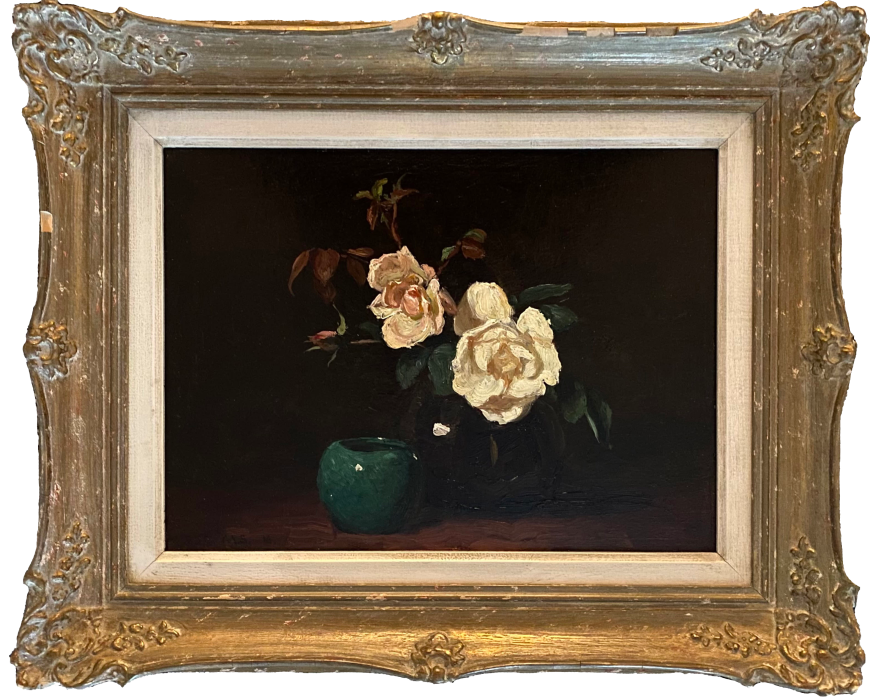-
Artworks
Frederick Simpson CoburnStill Life of Roses (with Malvina Scheepers), 19161871-1960Oil on wood board10 3/8 x 14 5/8 in
26.4 x 37.1 cmSoldInscriptions
signed and dated, 'F.S.C. + M.S. 16.' (lower left)Provenance
Private collection, TorontoExhibitions
Montreal, Galerie Walter Klinkhoff, Frederick Simpson Coburn (1871-1960) Retrospective Exhibition, September 1986, cat. no. 40.This beautiful and rich still life is a duet in paint by Frederick Simpson Coburn and the woman who would become his wife, Malvina Scheepers. Coburn met Malvina Scheepers in 1897 while studying at the National Higher Institute for Fine Arts in Antwerp, Belgium. There he occupied a studio above the home of architect Edouard Scheepers, Malvina’s father. At the time of Coburn’s arrival, Malvina was an art student and engaged to a Dutch painter. It wasn’t until almost 20 years later that Coburn and Malvina would marry.
During those years Coburn had a distinct preference for continental Europe. In 1913, he returned to Canada to spend time with his father, who was in failing health. With war also on the horizon, he had tried unsuccessfully to convince Malvina to join him. Once back in Canada, he reluctantly accepted to remain there until the war was over. His concern for Malvina would have made this a period of some anxiety for Coburn. Malvina eventually found herself stuck in Holland when the Germans occupied Belgium. Without any commitment from her, Coburn sent money for her passage to Canada in the hope of securing her safety - and marriage. Evelyn Lloyd Coburn, in the book about her uncle, F.S. Coburn: Beyond the Landscape, described the ensuing events as follows: “His patience was at last rewarded with the arrival of a cablegram on October 24, 1915, with the brief message: ‘Leave Saturday with Niew Amsterdam - Scheepers [Malvina].’ It is hard to imagine what Fred Must have felt…” [1].
On his return to Canada, Coburn had established a studio in his hometown of Melbourne, in Quebec’s Eastern Townships. It was there that Malvina finally joined him. She had left for Canada in late 1915 and so this “duet” of 1916 would have been painted soon after her arrival. Perhaps it was a celebration of their union.
With its muted tones and neutral, monochromatic background, Still Life of Roses projects some distinct qualities of the Dutch still life painting tradition, and the looser brushwork suggests the influence of the Impressionists. Coburn’s talent is legend but the lesser known Malvina was a competent professional artist in her own right. According to Evelyn Lloyd Coburn, the Coburn couple was known to work on the occasional landscape together and for at least a short period of time they each pursued their own art careers [2]. From 1916 to 1918, Frederick and Malvina Coburn featured independently in the exhibitions of the Royal Canadian Academy of Arts.
____________________________
Footnote:
1. Evelyn Lloyd Coburn. F.S. Coburn : Beyond the Landscape (Erin, Ontario: Boston Mills Press, 1996), p.68
2. Ibid., p.73-741of 4











